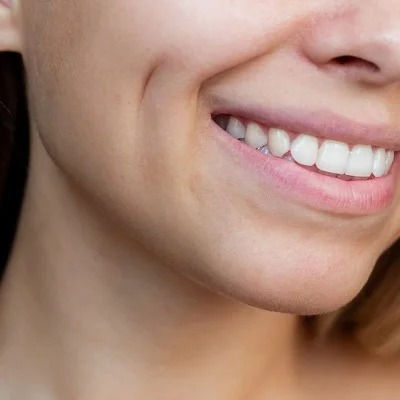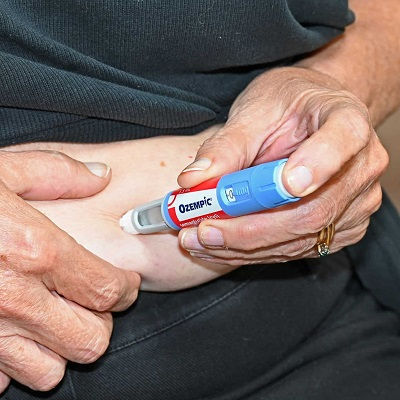The Anatomy of Dimples: Why Some People Have Them
- aliza khan
- May 21
- 5 min read
Dimples are one of the most enchanting and sought-after facial features around the world. Their subtle indentations enhance smiles and add an element of charm and uniqueness. For those intrigued by these natural facial expressions, the pursuit of the Best Dimple Creation in Muscat has become a popular cosmetic goal, especially for individuals who were not born with these delightful features. But why do some people have dimples naturally, and what anatomical factors are responsible for their presence? This article dives deep into the anatomy of dimples and explains why they occur in certain individuals while exploring the science behind this fascinating facial trait.
Understanding the anatomical basis of dimples not only sheds light on why they occur naturally but also helps those considering cosmetic enhancement understand how surgical dimple creation can mimic these natural indentations for aesthetically pleasing results.
What Are Dimples?
Dimples are small, natural indentations or depressions that appear on the skin, commonly on the cheeks and sometimes on the chin, especially when a person smiles or makes certain facial expressions.
Types of Dimples:
Cheek Dimples: The most common and typically appear on one or both cheeks.
Chin Dimples: Also known as cleft chins, these are indentations in the chin area.
Other Dimples: Rarely, dimples can occur in other facial or body areas.
Cheek dimples are usually what people associate with the iconic “dimpled smile,” and this is the focus for most cosmetic procedures aiming to create dimples artificially.

The Anatomy Behind Natural Dimples:
To understand why some people have dimples naturally, it’s essential to explore the anatomy of the facial muscles and skin structure involved.
Role of the Zygomaticus Major Muscle:
Dimples form due to variations in the structure of the zygomaticus major muscle, a muscle responsible for pulling the lips upward during smiling.
In people with dimples, this muscle can have a bifid (split) structure, meaning it splits into two separate bundles instead of being one continuous muscle.
This split causes a small tethering effect on the skin, pulling it inward and creating a visible depression or dimple.
The size and depth of the dimple depend on how the muscle splits and the amount of underlying fat and skin laxity.
Skin and Fat Layers:
The thickness and elasticity of the skin and subcutaneous fat also influence how prominent dimples appear. Thin skin and moderate fat in the cheek area tend to make dimples more noticeable.
Genetics and Dimples:
Dimples are often considered a hereditary trait, passed down from generation to generation. However, the genetics behind dimples are not entirely straightforward, and environmental and anatomical factors also play a role.
Why Do Some People Have Dimples and Others Don’t?
Genetic Factors:
Dimples are generally regarded as a dominant genetic trait, meaning if one parent has dimples, there’s a good chance their children might inherit them. However, the trait’s expression can vary widely:
Some people may have dimples on one cheek only.
Others may not have dimples despite having a parent with them.
The intensity and shape of dimples can differ even among family members.
Developmental Factors:
During facial development, muscle attachments and facial fat distribution can differ, influencing whether dimples appear.
Aging and Dimples:
As people age, the skin loses elasticity and fat distribution changes, which can cause dimples to become less noticeable or disappear altogether.
The Appeal of Dimples and the Rise of Dimple Creation Surgery:
Dimples have been admired across cultures and generations for their aesthetic appeal. This popularity has led to an increase in the number of people seeking cosmetic solutions to create dimples artificially. The best dimple creation in Muscat offers a way for individuals who were not born with dimples to enjoy the benefits of this attractive feature.
Why Choose Dimple Creation Surgery?
It provides a permanent, natural-looking enhancement.
It involves a minimally invasive procedure with no visible scarring.
Results are quick to achieve, often with minimal downtime.
How Dimple Creation Surgery Mimics Natural Anatomy:
Understanding the anatomy of natural dimples helps explain how dimple creation surgery replicates this unique feature.
The Surgical Technique:
The surgeon makes a tiny incision inside the mouth, avoiding any external scars.
A small portion of the zygomaticus major muscle is sutured to the inner cheek lining to create a tethering effect.
This creates a dimple that forms naturally when the muscle contracts during smiling, similar to how natural dimples work.
Customizing the Dimple:
Surgeons tailor the size, location, and depth of the dimple based on individual facial anatomy, ensuring a harmonious and natural outcome.
Who Can Benefit from Dimple Creation?
Ideal Candidates:
Healthy adults with no contraindications for minor surgery.
Individuals with realistic expectations about the outcome.
Those looking to enhance facial aesthetics with a subtle but effective change.
Considerations:
Candidates should discuss their goals and facial structure with an experienced cosmetic professional to determine suitability.
The Science of Facial Muscles and Expressions:
Dimples not only add beauty but also relate to facial muscle function and expressions.
Muscle Function in Smiling:
The zygomaticus major muscle plays a key role in lifting the corners of the mouth. When dimples are present, this muscle’s unique structure alters facial dynamics, sometimes making smiles more expressive.
Emotional Impact of Dimples:
Research suggests that dimples may enhance perceived friendliness and approachability, impacting social interactions positively.
The Cultural Significance of Dimples:
Dimples hold different meanings in various cultures, adding to their desirability.
In some cultures, dimples are considered signs of beauty and good luck.
Celebrities and media often highlight dimples, increasing demand for surgical creation.
The popularity of the best dimple creation in Muscat reflects this global fascination combined with regional aesthetic preferences.

Post-Surgery Expectations and Recovery:
Immediate Aftercare:
Mild swelling and tenderness are common.
Soft diet and careful oral hygiene are essential.
Recovery Timeline:
Swelling typically subsides within a week.
Final results become visible after several weeks as tissues heal.
Longevity of Results:
Surgically created dimples are permanent but may change subtly with aging.
Alternatives to Surgical Dimple Creation:
For those hesitant about surgery, alternatives include:
Temporary makeup contouring to simulate dimples.
Dermal fillers (though less common for this purpose).
Non-surgical methods generally provide temporary effects.
How to Choose the Right Surgeon for Dimple Creation:
Credentials and Experience:
Seek surgeons specialized in facial cosmetic procedures with proven dimple creation experience.
Patient Consultations:
Discuss expectations, review before-and-after photos, and ensure clear communication.
Reviews and Recommendations:
Look for positive patient feedback and referrals.
Why Muscat Is a Growing Destination for Cosmetic Dimple Creation:
Muscat offers advanced cosmetic services that combine modern techniques with cultural sensitivity. The demand for the best dimple creation in Muscat reflects the city’s reputation for quality care, skilled professionals, and personalized treatment approaches.
Conclusion:
Dimples are more than just a cute feature—they are a fascinating result of facial anatomy and genetics that many wish to have. Whether naturally born or surgically created, dimples contribute significantly to one’s facial charm and expression.



Comments